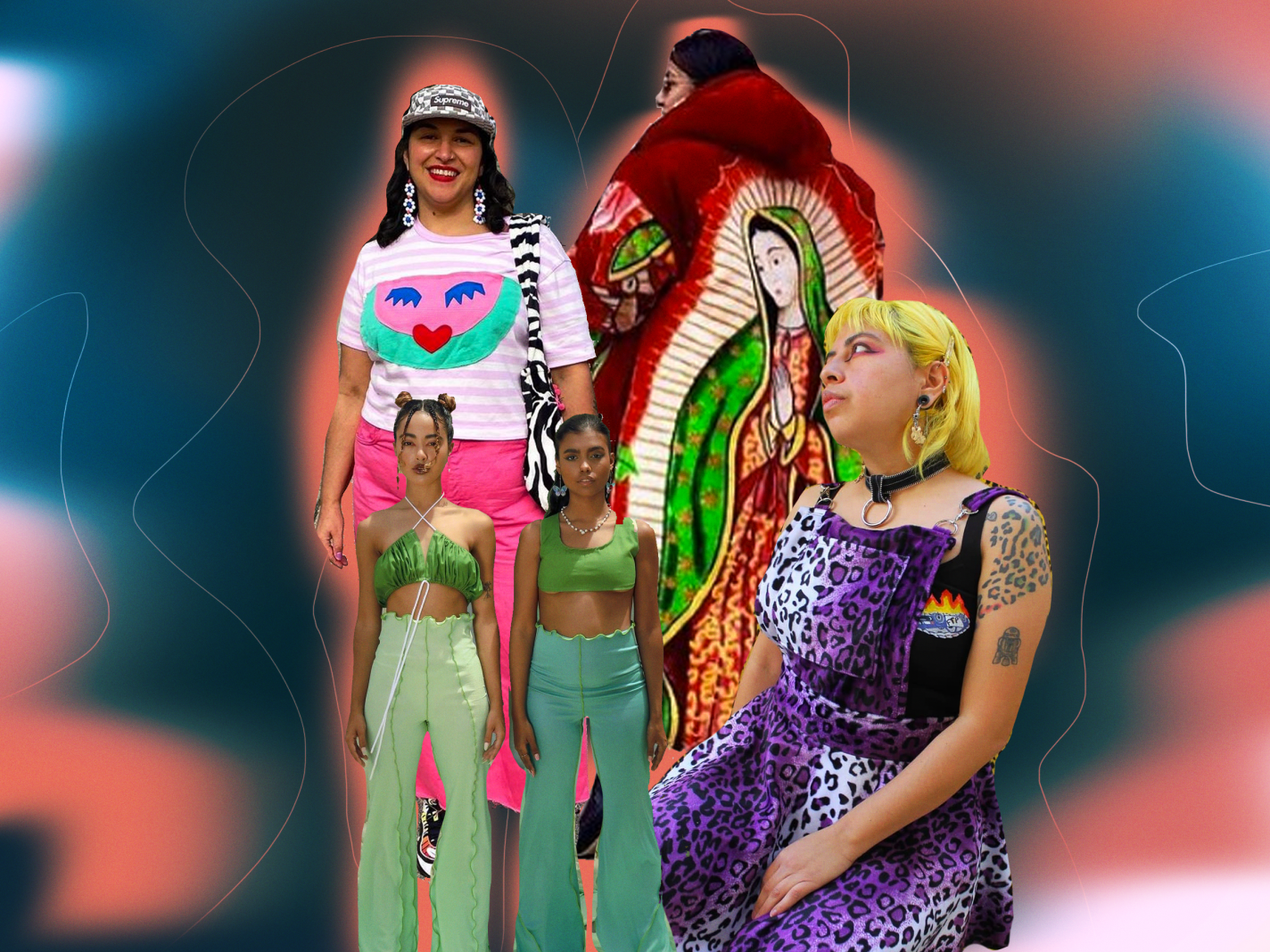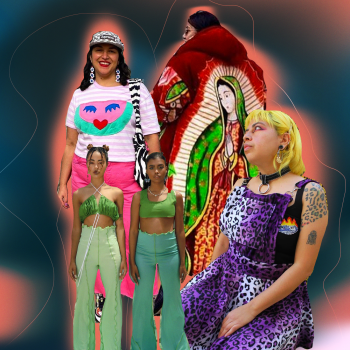For those of us who revel in putting together outfits and love to get dressed, the lure of a trendy top at only $5 can be hard to ignore. The more clothes we’ve got the better, right? Not quite. AS you may know, fast fashion has done, and will continue to do, damage to our environment and climate change is a serious, immediate problem. So why are we still buying cheaply made clothes?
There are a lot of reasons, many of them are legit, too: Low prices afford the majority of us— you know, us folks living paycheck to paycheck—some control over our looks. It’s our right to claim that agency, of course; personal style aids us in presenting identity and many of us need that option. But when we can’t afford eco-friendly luxury brands, we often look to shops like SHEIN, Forever 21 and others where we can get the clothes we want for a price that won’t break our budget. But there are alternatives—really great ones, in fact. Our shopping choices are not limited to either ultra-cheap or super-expensive. Although many of us know that, putting it into practice takes effort in habit-breaking and intentional shopping.
Choosing sustainable and slow fashion brands takes a little more mental energy, and a little more money, too. Independent makers don’t have the same budget for advertising as big corporations, and they don’t rely on exploitative labor and sweatshops that enable those big corporations to sell so cheaply. In other words, these brands are harder to find, and their prices, in most cases, are higher than the cost of a trip to Taco Bell.
Buying mindfully, though, has both environmental and personal benefits. It helps us develop our personal style as opposed to relying on trends and, ultimately, you’ll actually spend less. As designer Vida Vazquez explains, “When you’re embracing your individual style more, you waste less money on trying to keep up with what’s fashionable.”
Secondhand and vintage are other great alternatives to buying brand-new fast fashion. Making the full swerve away from unethical fashion is difficult. But even cutting back on your purchases slightly—if we all do this—will be positively impactful for the environment. Here are five sustainable and slow fashion brands at varying price points—in all different styles, but always with quality and eco-friendly ethics in mind.
The Velvet Party by Katerine Torregrosa
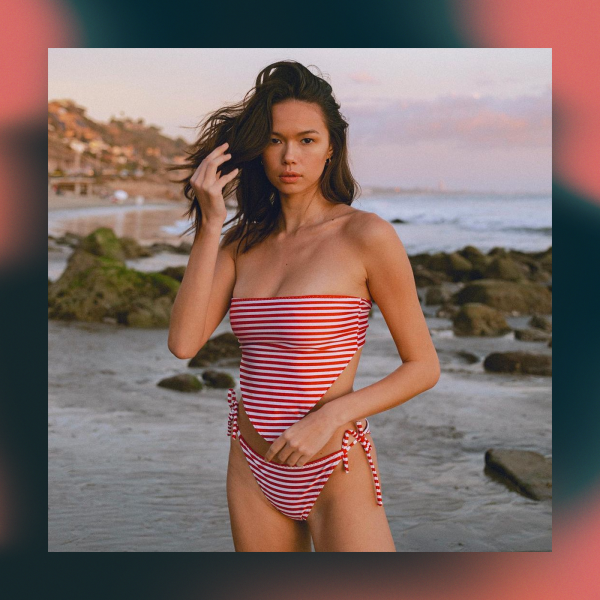
Basically everything Katerine Torregrosa creates can stretch—asymmetrical catsuits, high-cut swimsuits, halter-and-palazzo sets and slacks and ringer tees made in mesh, PVC, and spandex-poly blends.
High-waist slacks in neon-green holographic spandex? An asymmetrical catsuit in red-and-back zebra print? Yes to both, and everything else Katerine Toregrosa creates. Categorize them as festival clothes if you will, but every single day is a festival for some of us (at least in terms of style). Her red PVC vinyl chaps may be hard to tone down—but why would you want to? T hat’s the whole point of nalga-exposing pants, no?
Born in Colombia, Torregrosa, Torregrosa studied in Bogotá before relocating to Florida. Her mother, already living in Hollywood, managed to get the budding designer, still under 21 at the time, a green card.
“At that moment I wasn’t really interested in [relocating],” she tells Remezcla. “I had my life going on in Colombia. But looking back, it was obviously a good decision.” Schooling in Fort Lauderdale was costly, and non-transferrable credits required her to start from zero. So Torresgrosa stopped at an associate’s degree, worked in digital marketing, then ultimately decided to make The Velvet Party her full-time career. “I don’t think I was ready at that moment,” she laughs. “But I did it.”
In-real-time business finance learning followed, and while it was no doubt tough, Torregrosa has succeeded in building a brand that’s distinctly her own, yet made with everyone else in mind. Price accessibility is a major focus for her, as is inclusive sizing. Customers can pick a set size or choose to customize, but either way, she’s going to ask for some measurements before she cuts your garment. Knowing a person’s height is paramount in creating items like bodysuits, for example, and everyone deserves a comfortable fit.
Vida Vazquez Studio
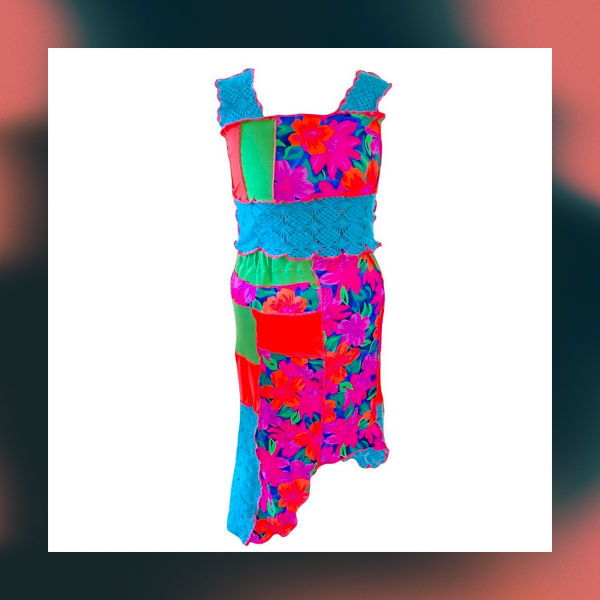
Her mixed-race background, the cultural diversity of her Bay Area upbringing, and upcycling—these are the inspirations and foundations for all that Vida Vazquez makes. “The flea market is my happy place,” the self-described “color enthusiast” says. Unexpected patchworks of bright-and-bold prints with varying textures of textiles make for uniquely joyful, sustainably-made tanks, crop tops, dresses and more.
Once a full-time educator, Vazquez started with pop-up markets and online selling of jewelry and original artwork. It was in the last three years that she began to focus more intentionally on her creative practice. Then, it was during the pandemic that she found more time to experiment with sewing, “and that’s how I got into making clothes to sell,” she says. “I had made clothes just for myself for a couple of years before that. But then in the pandemic, it’s like, let’s try this out, and people really responded to it. That was very validating and encouraging.”
You’ve gotta move quick to get in on Vazquez’s print-and-color-block party—her Instagram drops sell out fast. Don’t expect a massive uptick in availability, either; small batches a couple times per month is where she’ll stay for the foreseeable future, even if the clothes she saves from landfills encroach on her living space.
Working at her own pace helps her keep her creativity percolating, so that every piece is special. “I don’t want the things I make to just get thrown in the back of somebody’s closet,” she says. “So sometimes it does take a little longer. [For me] it’s better to go at a comfortable pace to make something kind of mindful: something that people are going to want to return to and not just wear a couple of times.”
Audey Thunders Clothing by Lizz Zuniga
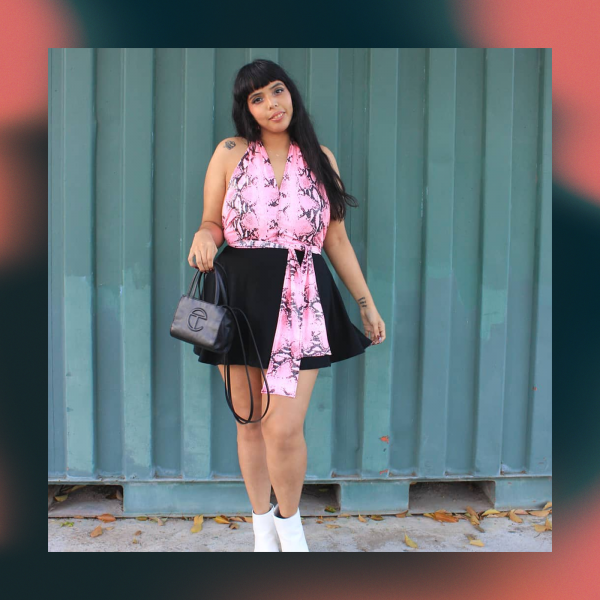
Rock ‘n’ roll and punk fans already know: the Thunders in Audey Thunders Clothing refers to the late Johnny Thunders, who is as much an icon for his music as for his glam looks—think platform shoes, leather pants, patterned neck scarves and wild, wild hair. Once you see the shop, you know Zuniga is honoring the legend well with pieces like clear vinyl skater skirts, overall dresses in leopard, zebra, and tiger prints, plus two-tone and patchwork shorts and leggings. Another specialty in the Audey Thunders line is bags: fanny packs, belt pouches and backpacks in varying textiles, like vinyl, velvet faux leather. (There are also hearts. Hearts!)
Why Audey, though? Well, it’s for her son, she explains: “I had my son when I was 17, so he is going to be 14 now. He’s a big part of all of this.” Audey Thunders, the line itself, is about his age; Zuniga, now 31, started selling about a year after he was born.
Zuniga also works for a company that runs progressive political campaigns; she’s doing COVID vaccination outreach at the moment. That work, while arduous, comes in stints, so Audey Thunders Clothing is available for purchase round-the-clock. Items take time to make and ship, because everything is made by Zuniga’s hands.
Growing up poor in Southern California, Zuniga says, instilled in her a thrifty, DIY spirit; at 13, she was already sewing by hand. “I worked at an outdoor swap meet,” she says, where she found fabric supplies and wholesalers to help realize her creations—and match her ethos.
“Since I was young, I became a vegetarian and a vegan and all that, so I was really into I guess how it impacts the earth. Just how everything we do impacts the earth,” she says. “Clothes, fast fashion, is a big one. Then obviously I got more into human rights and I think that’s a huge thing for fast fashion, especially women and women of color, who are the most affected. So all of those things for me… are really important.”
Mob Studios
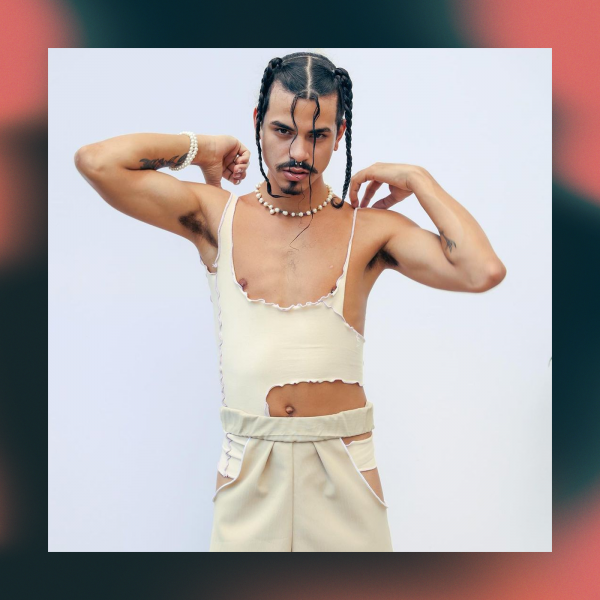
In Aguadilla, on the west coast of Puerto Rico, is a pioneering creative at the center of what’s shaping into a collective. Formerly known as Sad Mob, Gabriel Feliu changed his line’s name to Mob Studios to reflect its ultimate goal. The production team, which includes everything from stylists to MUAs and other designers, work from a brick-and-mortar space where they realize Mob Studios designs and work on original campaigns for other brands. “I’m doing this for my island,” Feliu says. “My island needs this.”
And there’s no doubt that what Feliu has planned will happen, and probably soon. Already, Mob Studios has cultivated a unique brand through Feliu’s mastery of digital design and well-defined aesthetics. He’s collected a crew of models with whom he has a palpable chemistry. And while Mob Studios’ style is ever-evolving, the creations follow a cohesive vision.
“I think keywords to identify my work is that it’s always minimal, it’s very unapologetic and it always creates a statement. And I think that’s the major inspo and vision for everything,” Feliu says. “When I sit down to design, no matter how small the design… I try to incorporate something that alters and just elevates it a bit more.”
Second-hand materials are incorporated into the line, but it’s [the] deadstock and long-overlooked fabrics—some of which have been sitting in Puerto Rican textile shops for years or even decades—that Feliu scoops most often. “If the material has lasted that long in the fabric store,” he says, “then it’s a very good material.”
The 24-year-old designer and artist credits the mandatory slow-down during last year’s lockdown for helping him shape the Mob, originally founded in 2018, into what it is today. “I had the time to reevaluate what the Mob is, what the brand is going to look like. It’s been a process of trial and error and constant evolution and trying new things—testing the waters to see what works,” Felius says. “And from there, it’s just been snowballing into something else. I think it’s going to keep on growing bigger than what I’m even imagining right now.”
Equihua by Brenda Equihua
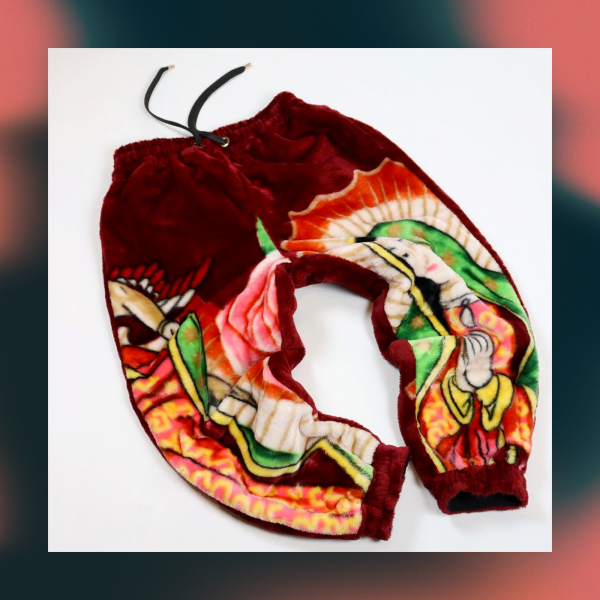
“This is how I want people to see themselves when they wear one of my pieces: You are the most baddest version of yourself. I want you to feel regal, important and all the shit that you have been told that you’re not, or have been conditioned to think you’re not,” says designer Brenda Equihua.
Price-wise, Equihua is the highest on our list. But there’s a reason for that: All of her pieces are decidedly luxurious. After studying at Parsons, Equihua worked for Monique Lhuillier and knows firsthand what it takes to make luxury garments. She’s the only full-time worker for the line but her sister sometimes helps with cutting and they tap trusted sewers who’ve become like family to her when needed.
And while celebrities like Kehlani, Lil Nas X, Young Thug, and Hayley Kiyoko are sporting Equihua, the line is intended to be accessible to everyday folks. The core of Equihua right now is about reworked cobija blankets—joggers, hoodies, jackets and nearly floor-length coats. Being culturally symbolic and a staple comfort item in so many Mexican homes, turning cobijas into wearables is a kind of tribute to her community.
“A lot of the people that are buying these pieces, this is their first luxury item that they have purchased for themselves. And that means so much to me,” she says. “People are working hard to save their money to buy these pieces—we better fucking make these beautifully. We better be pouring all of our heart and all of our energy into honoring that.”
The cobija was originally created in the ‘70s in San Marcos, Aguascalientes, Mexico, by Jesús Rivera Franco, and hit a high in popularity in the ‘80s and ‘90s. Designs on these blankets range from tigers and other powerful, wild animals to Catholic saints and sports teams logos and much-beloved cartoon characters. Rivera Franco sold the line in the ‘90s and in 2004; the factory that originally made the plush blankets closed because cheaper imitations had flooded the market by then.
There are, however, other companies, Mexican and otherwise, making cobijas again today. That’s where Equihua sources her textiles, rather than using the original San Marcos blankets. “I don’t want to see that history gone. I wanted the original cobijas to be preserved, and for those to exist in their original form,” she says. Equihuah also notes she uses every piece of the cobija—even small trimmings are saved for hoops (aka Donas) and scrunchies (aka Funchies).
To make it possible for more people to experience the lavish look and feel of the Equihua brand, the shop offers payment plans, which she says a lot of high-end designers see as a depreciation of its worth. “I don’t fucking care about that,” Equihua says. “Making it so people in my community can buy it [is important]. Like, I’m having this conversation about these San Marcos pieces, for the one percent? Why? Those people don’t understand this story. They don’t know what it’s about.”



